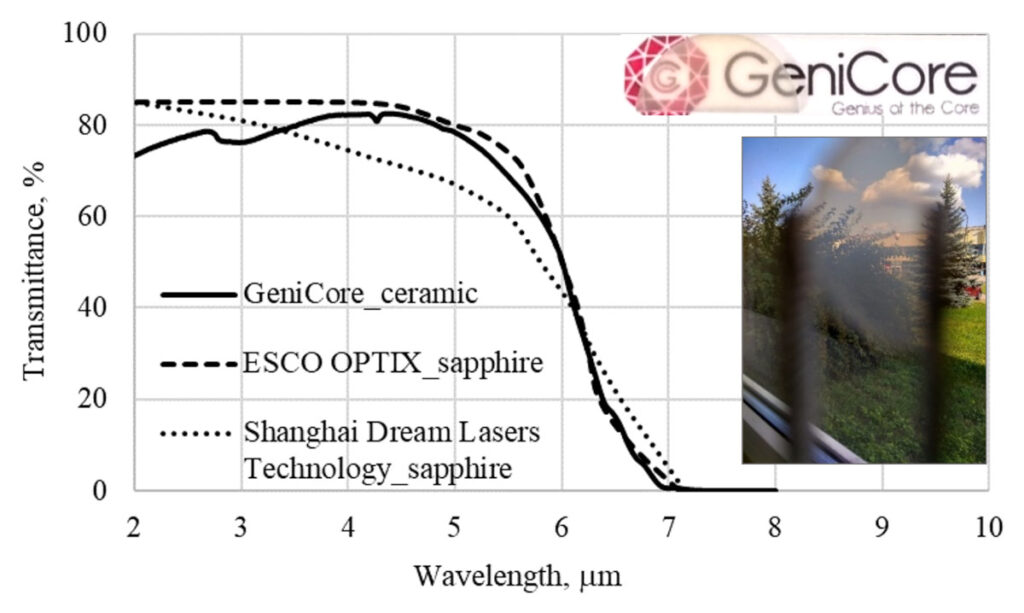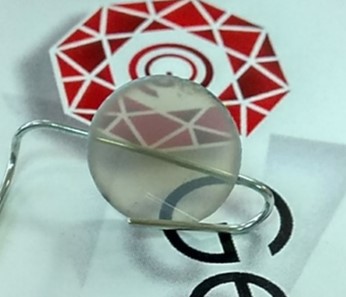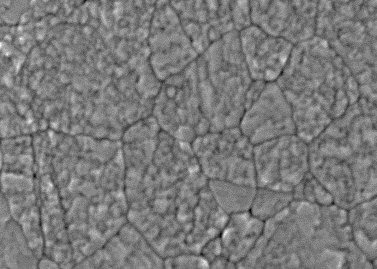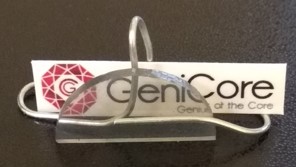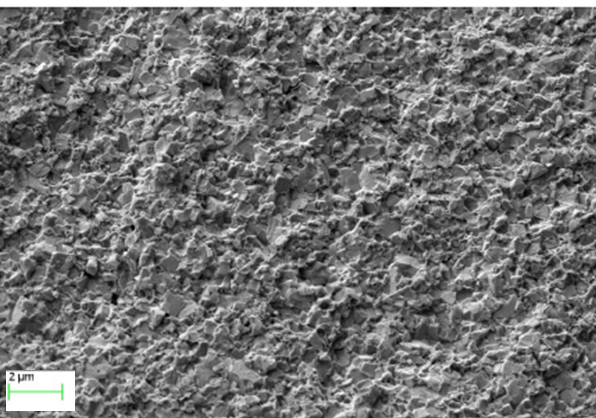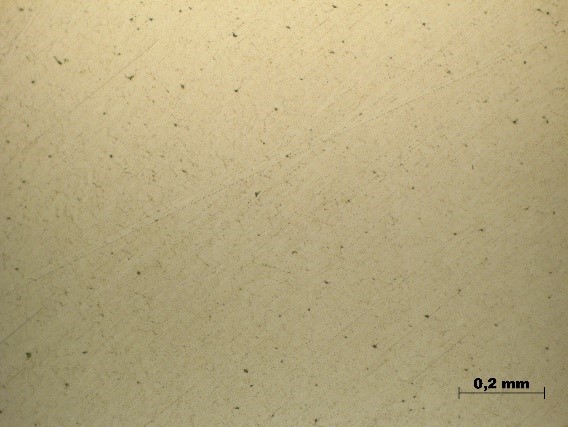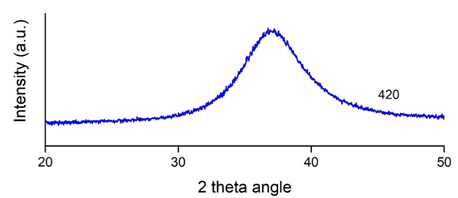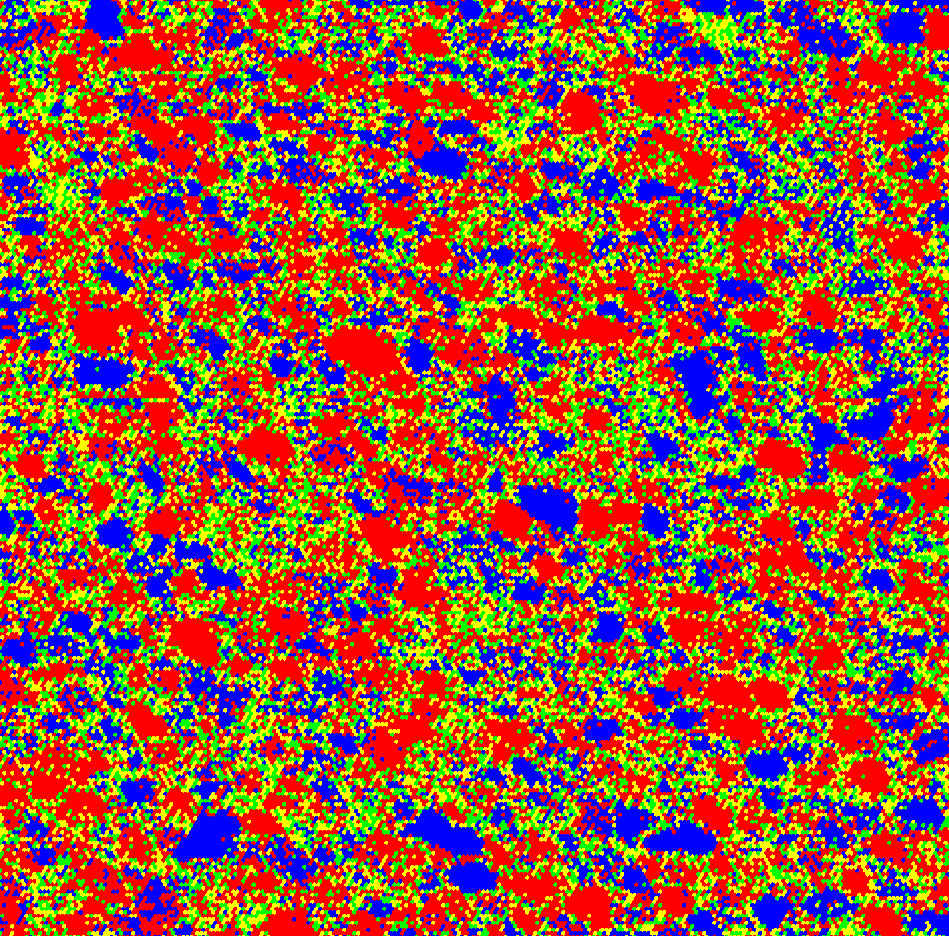Main services
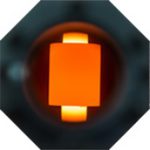
GeniCore provides a short series production using GeniCore U-FAST technology which is ideal for: Consolidation a wide range of innovative materials, Sintering non-conductive materials, Nano-grain materials thanks to very short pulses – below 1 ms, Low temperature sintering materials, Hight thermal conductive materials
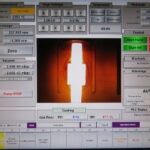
GeniCore offers a guarantee and post-guarantee servicing of the produced devices. From the design stage of the device, we put the greatest emphasis on the reliable operations of our devices, additionally offering an ‘on-line’ service for operational continuity. We offer a tele-service contract and on-line support, as well as technical support through our network of partners like Retech in USA.
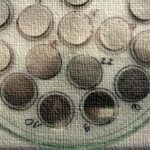
Feasibility study – we offer the making of “demo samples” for your technology. Thanks to this, at an early stage without investing in extensive R&D research you will learn whether the material/technology will work in your application.
Proof of concept – we offer the making of a trial batch of “test samples” to test the materials/technologies in conditions similar to your application.
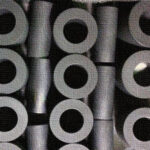
The ability to support our clients both in the area of modern sintering techniques aided by the electric field of SPS, FAST, EDC types and their applications is thanks to the knowledge of our team members and its many years of experience in R&D research work.

Based on GeniCore experience in sintering we have a pleasure to offer graphite parts dedicated for all types of sintering technologies. We can produce different set and dimension of the parts up to request or according to drawings or prepared documentation.
Our R&D Materials
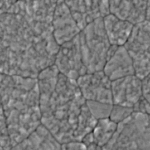

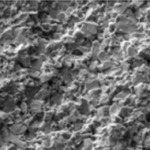

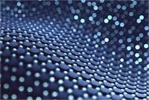
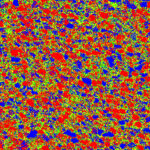
Other services

- Vertical machine
- Ø150mm cup wheel
- 5HP grinding motor power
- Adjustable column up to 75 mm
- Ø 300 magnetic rotary table
- Magnetic chuck, neodymium magnets

- SEM with modes: high vacuum (1.0nm@30kV) low vacuum (1.2nm@30kV) and ESEM (1.3nm@30kV)
- High resolution – field emission gun
- Observations of a wide range of samples
- Non-conductive samples do not require sputtering
- Accelerating voltage range: 200 V – 30 kV
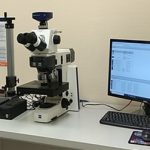
- Metallographic microscope
- Automated in X, Y and Z axis
- Z images assembling function to obtain sharp and focused pictures of non-planar samples
- Magnification of x50 – x1000
- 2464 (H) x 2056 (V) = 5.07 mega pixel colour; pixel size: 3.45 x 3.45 μm
- ConfoMap: line and 3D profiles of surface
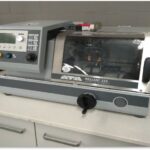
- Suited for precise cutting of small part with different geometries
- Three automatic axes (X, Y, Z)
- Several cutting modes
- Cutting wheel up to Ø 203 mm/8”
- 300-5000 rpm
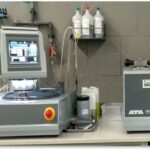
- Fully automatic and hydraulic device
- Automatic process sequence
- Cooling with pulsed water flow
- 6 different sizes Ø 25.2 – 40 mm
- Thermostate range 20-200 °C
- pressure 450 bar
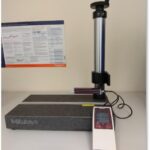
- Surface mapping
- Calculation based on roughness standards including JIS standards, VDA, ISO-1997, ANSI
- measuring range: 360 mm
- Display roughness parameters such as: Ra, Rz, Rc, Ry, Rmax, Rmin and many others
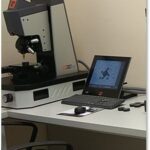
- Vickers hardness testing with an automatic measuring head
- Load from 100 g to 31 kg
- Cracks measuring according to the norm
- Lenses: 10x, 20x, 40x, 65x

Transparent ceramics (Al2O3)
Optically transparent conventional materials include mainly glass, polymers and alkaline metal hydrides. However, they have relatively low mechanical strength and, for some applications, insufficient chemical and physical stability. More importantly, these materials have a strong absorption in the infrared range and are therefore not suitable for applications in this spectral range. Furthermore, they usually have a relatively low melting point (< 600°C), so they cannot be used at high temperatures.
One solution is to use monocrystals. However, their growth requires sophisticated equipment and is very time-consuming, resulting in a significant increase in production costs. In addition, it is necessary to process single crystals in order to meet the requirements set by the application, which is a difficult task. Other problems associated with the cultivation of single crystals include the difficulty of large-scale production and the mechanical fragility of some materials.
Faced with these problems, polycrystalline materials seem to be the most attractive. The main advantages compared to monocrystals are cost-effectiveness, fast large-scale production, shape control and better mechanical properties.
These materials have extremely useful properties. Due to the combination of high hardness, corrosion resistance, thermodynamic stability and relatively low price, aluminum oxide is one of the most common ceramic materials. It is a lightweight material with a density of < 4 g/cm-3 and a melting point of 2072°C. It is used for a very wide range of applications, including hip implants, thread guides, cutting tools, valves, water mixers and many others.
The particular advantage of aluminum oxide with a very fine grain size is that it is transparent and can successfully replace sapphire.
Traditionally, corundum ceramics are obtained using Hot Pressing (HP) or Hot Isostatic Pressing (HIP) of submicron powders. These processes are carried out at temperatures close to 1700°C. Moreover, these methods require the use of sintering compounds. This increases the cost of producing materials both due to additional compounds and additional technological processes such as mixing and drying to make the mixture homogenous.
The application of the U-FAST device allowed to produce this material with a density close to the theoretical one already at the temperature of 1150-1200°C. The sintering process was carried out using a high purity material (99.99%), without any sintering additives.
Some applications of translucent corundum include
- high-temperature light transmitting elements (view ports)
- tiny elements of armour
- security windows
- Infrared detectors
- envelopes of infrared emitters

Transparent ceramics (MgAl2O4)
Magnesium aluminate spinel is one of the most frequently studied transparent ceramic materials. Spinel is practical interest for fiber optic temperature sensors, tunable solid-state lasers, matrices, manufacturing optical nanodevices, matrices for carrying out transmutation transformations, and filler material for disposal of radioactive waste. Materials can be doped with rare earth metals for laser applications.
MgAl2O4 possesses high optical transmission in the ultraviolet, visible, and infrared spectral ranges and excellent mechanical properties.
| monocrystal | Saphire (Kyocera) | Spinel |
| Density | 3.97 g/cm3 | 3.58 g/cm3 |
| Young’s Modulus | 470 GPa | 230 GPa |
| Mohs hardness | 9 | 8 |
| Vickers Hardness
(98 N) |
23 GPa | 14-16 GPa |
| Fracture toughness | 2.5-4.5 MPa m0.5 | 1.9-2.2 MPa m0.5 |
Conventional approaches for MgAl<sub>2</sub>O<sub>4</sub> powders consolidation are often based on pressure-less sintering (PLS) at relatively high temperatures, combined with hot pressing (HP) and hot isostatic pressing (HIP). Sintering additives are commonly used in the fabrication of ceramics. However, using such additives in connection with the fabrication of transparent ceramics is problematic.
Spinel ceramic obtained by U-FAST technology is produced using commercial powders without sintering additives have been used. The shaping of materials takes place without additional stages, such as special preparing of powder, preliminary compaction, isostatic densification. This material is characterized by a high degree of sintering with 99.9% theoretical density and high hardness of 17.5 GPa. The sintering process is carried out at temperatures in the range of 1200-1300℃.

Sintered carbides (WCCo)
Sintered carbides (WCO ) are used, among others, in the industry of cutting tools, construction elements, as a material for powder pressing dies. This is due to the combination of desired properties such as high hardness and mechanical strength. Carbide cutting elements are usually produced by such methods as Hot Pressing (HP) and Hot Isostatic Pressing (HIP). However, these methods have many disadvantages, such as low speed and long sintering time, high equipment and usage costs. From this point of view, SPS sintering is a more advantageous solution.
As an example, tungsten carbide was sintered. The sintering of the WC was made from powder with an average grain size of 0.65 µm, containing inhibitors and with the addition of 10% cobalt. The material was obtained with a density of 99.8-100% compared to the theoretical density at 1100-1220℃.

Bulk Metallic Glasses (Zr-Cu-Al-Nb)
Bulk Metallic Glasses (Zr-Cu-Al-Nb) are available in a wide range of configurations. Compared to conventional metals and alloys, they have better mechanical and chemical properties due to their amorphous structure. Therefore, they are considered to be a new generation of materials very resistant to stress. In addition, they have a very high tensile yield strength (1.9 GPa), elastic deformation (2%), hardness (600 HV) and corrosion resistance. However, BMGs are difficult to produce due to the relatively high cooling rates required for amorphous solidification. Metallic glasses can be used in many fields of technology, for example in the form of foam for the construction of future spacecraft for long-term flight into space or in medicine.
Sintering in Zr-Cu-Al-Nb system was carried out from the powder mixture. As a result, after the process at 420℃, a material of 99.2% theoretical density was obtained. XRD measurements showed no crystalline phase, while the image of the presented microstructure shows high uniformity of metallic glass.

Thermoelectrics (PbTe)
Thermoelectric technologies consist in direct conversion of waste heat into electricity and vice versa. Thermoelectric generators are used, among other things, to convert energy in “silent” atomic submarines, cooling of network transformers or air conditioning system modules, they work as micro-generators supplying sensor systems or Peltier elements cooling microprocessors. PbTe compounds are currently considered to be one of the most interesting thermoelectric materials, thanks to many desirable features they have, such as isotropic morphology, high crystalline symmetry, low thermal conductivity, ability to control the concentration of media.

High-Entropy Alloys (HEA)
High-Entropy alloys, thanks to their wide range of possible and tunable properties, open a lot of opportunities in automotive, aerospace, medical, nuclear and structural applications. HEA are materials of the future but they are quite expensive. U-FAST/PPC technology can bring the price of production of HEA to realistic values and at the same time keep or even upgrade their properties.
The below photo was obtained thanks to courtesy of polish Military University of Technology.





